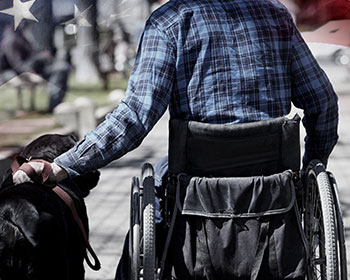Project Details
| Title: | COVID-19's Effect on Rural Veteran Mobility and Healthcare |
| Principal Investigators: | Del Peterson |
| Start Date: | April 2021 |
| End Date: | June 2022 |
| Status: | Completed |
| Keywords: | costs, COVID-19, health care, mobility, rural areas, surveys, transportation disadvantaged persons |
Abstract
 The current pandemic has affected the lives of all Americans. Rural communities are particularly vulnerable due to lacking mobility services and the great distances one must travel for healthcare and other needs. Nearly five million veterans live in these rural communities, representing 57% of VA health care enrollees (MOAA 2020). COVID-19 cases and deaths among rural veterans have increased at a faster rate compared to veterans in urban areas according to Johns Hopkins (2020). They also found that delayed COVID-19 testing contributed to a higher rate of cases in rural areas compared to urban areas as well.
The current pandemic has affected the lives of all Americans. Rural communities are particularly vulnerable due to lacking mobility services and the great distances one must travel for healthcare and other needs. Nearly five million veterans live in these rural communities, representing 57% of VA health care enrollees (MOAA 2020). COVID-19 cases and deaths among rural veterans have increased at a faster rate compared to veterans in urban areas according to Johns Hopkins (2020). They also found that delayed COVID-19 testing contributed to a higher rate of cases in rural areas compared to urban areas as well.
The Veteran Administration's (VA) Office of Rural Health has recently increased efforts to combat the pandemic in rural areas. These efforts include:
- 1,476% increase in Telehealth visits
- 8,000 completed contact traces
- 102,000 rural veterans reached through the suicide prevention program
- Active debt referral
- 55,000 new rural veteran job hires
Federal Veterans News (2020)
While all of these resources have aided rural veterans during the past year, VA health care enrollees still face issues related to medical provider shortages, limited broadband internet access, and transportation concerns, among others. Many rural veterans also have special mobility needs and must travel long distances to receive medical care.
The main objective of this research is to identify veterans affected by COVID-19 who have mobility needs living in rural areas and to quantify the cost of transportation options for meeting these needs. Secondary objectives will include analyzing the role of telehealth and how the pandemic has affected mobility and isolation among veterans in rural America.
Project Deliverables


